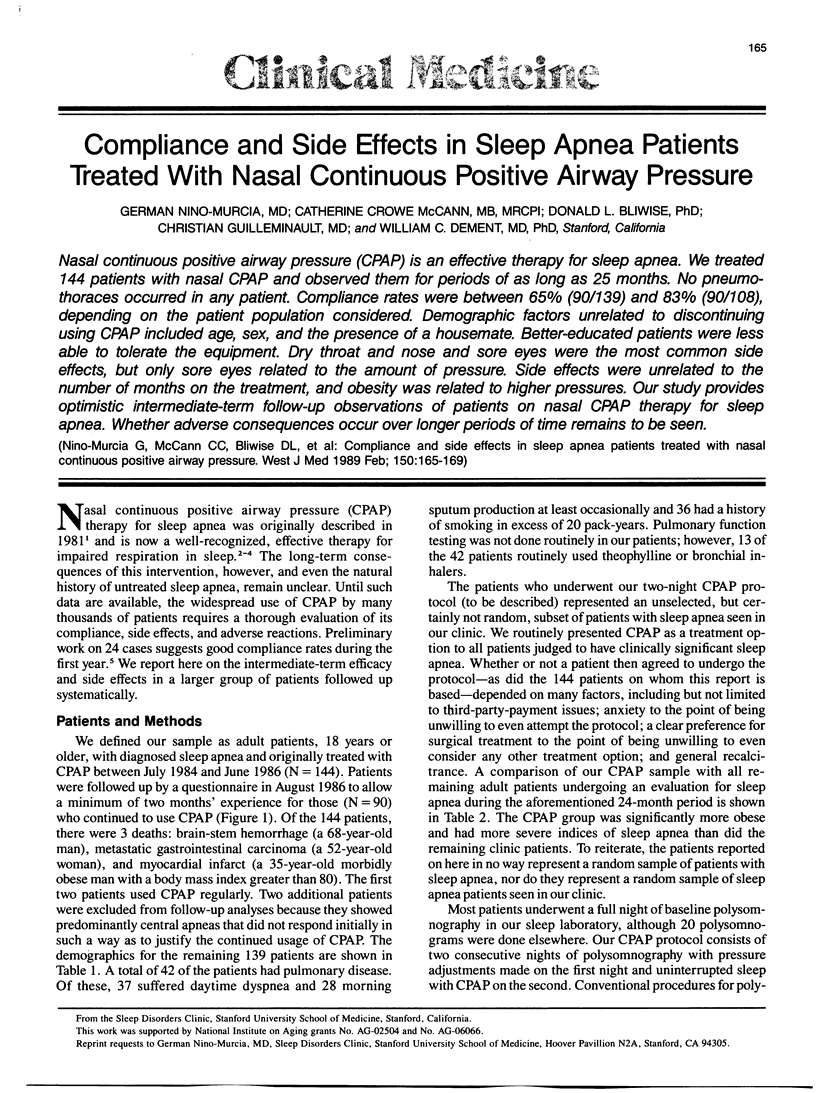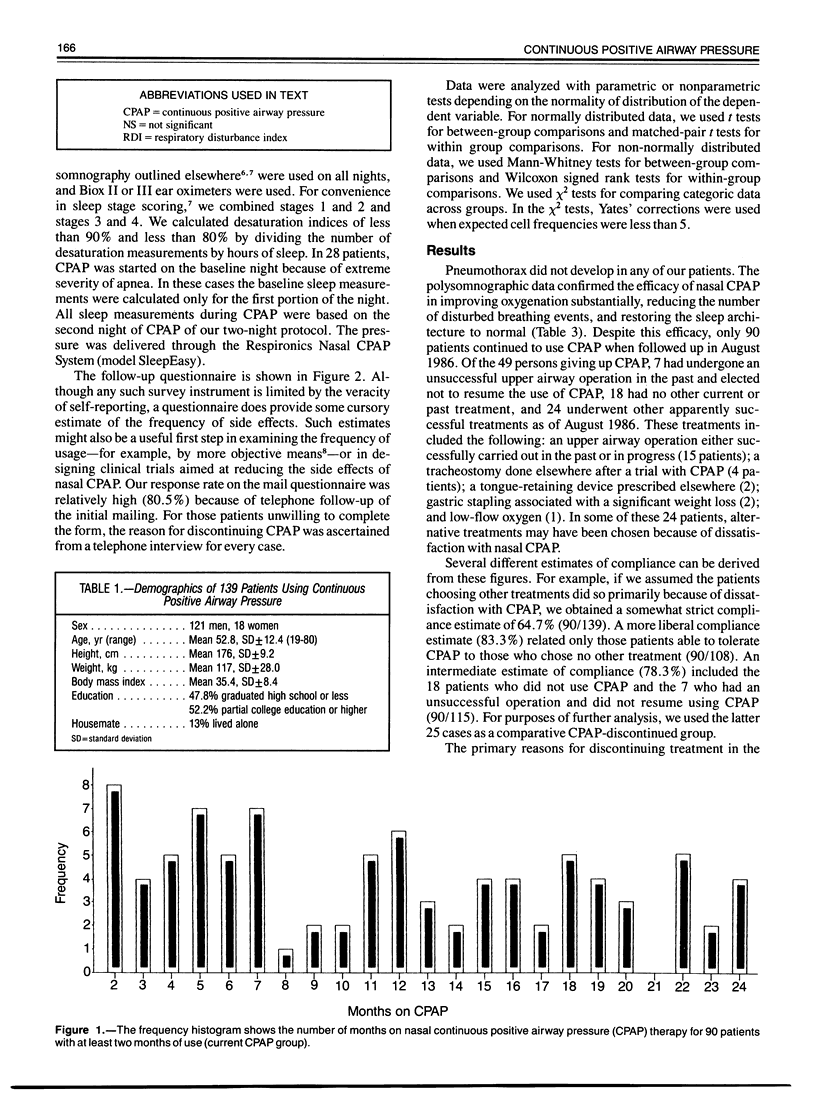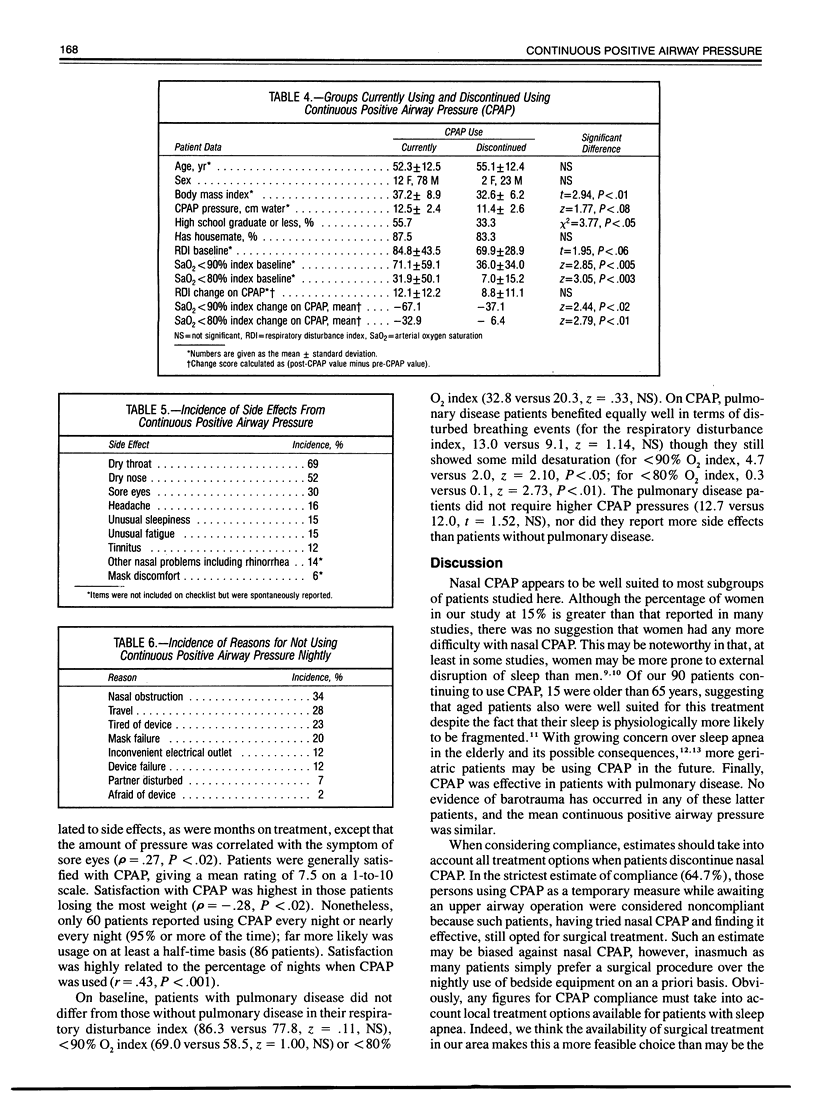Abstract
Nasal continuous positive airway pressure (CPAP) is an effective therapy for sleep apnea. We treated 144 patients with nasal CPAP and observed them for periods of as long as 25 months. No pneumothoraces occurred in any patient. Compliance rates were between 65% (90/139) and 83% (90/108), depending on the patient population considered. Demographic factors unrelated to discontinuing using CPAP included age, sex, and the presence of a housemate. Better-educated patients were less able to tolerate the equipment. Dry throat and nose and sore eyes were the most common side effects, but only sore eyes related to the amount of pressure. Side effects were unrelated to the number of months on the treatment, and obesity was related to higher pressures. Our study provides optimistic intermediate-term follow-up observations of patients on nasal CPAP therapy for sleep apnea. Whether adverse consequences occur over longer periods of time remains to be seen.
Full text
PDF




Selected References
These references are in PubMed. This may not be the complete list of references from this article.
- Bliwise D. L., Bliwise N. G., Partinen M., Pursley A. M., Dement W. C. Sleep apnea and mortality in an aged cohort. Am J Public Health. 1988 May;78(5):544–547. doi: 10.2105/ajph.78.5.544. [DOI] [PMC free article] [PubMed] [Google Scholar]
- Lukas J. S. Noise and sleep: a literature review and a proposed criterion for assessing effect. J Acoust Soc Am. 1975 Dec;58(6):1232–1242. doi: 10.1121/1.380805. [DOI] [PubMed] [Google Scholar]
- Rapoport D. M., Sorkin B., Garay S. M., Goldring R. M. Reversal of the "Pickwickian syndrome" by long-term use of nocturnal nasal-airway pressure. N Engl J Med. 1982 Oct 7;307(15):931–933. doi: 10.1056/NEJM198210073071507. [DOI] [PubMed] [Google Scholar]
- Sanders M. H., Gruendl C. A., Rogers R. M. Patient compliance with nasal CPAP therapy for sleep apnea. Chest. 1986 Sep;90(3):330–333. doi: 10.1378/chest.90.3.330. [DOI] [PubMed] [Google Scholar]
- Sanders M. H., Moore S. E., Eveslage J. CPAP via nasal mask: a treatment for occlusive sleep apnea. Chest. 1983 Jan;83(1):144–145. doi: 10.1378/chest.83.1.144. [DOI] [PubMed] [Google Scholar]
- Sullivan C. E., Issa F. G., Berthon-Jones M., Eves L. Reversal of obstructive sleep apnoea by continuous positive airway pressure applied through the nares. Lancet. 1981 Apr 18;1(8225):862–865. doi: 10.1016/s0140-6736(81)92140-1. [DOI] [PubMed] [Google Scholar]
- Sullivan C. E., Issa F. G., Berthon-Jones M., McCauley V. B., Costas L. J. Home treatment of obstructive sleep apnoea with continuous positive airway pressure applied through a nose-mask. Bull Eur Physiopathol Respir. 1984 Jan-Feb;20(1):49–54. [PubMed] [Google Scholar]
- Zepelin H., McDonald C. S., Zammit G. K. Effects of age on auditory awakening thresholds. J Gerontol. 1984 May;39(3):294–300. doi: 10.1093/geronj/39.3.294. [DOI] [PubMed] [Google Scholar]


